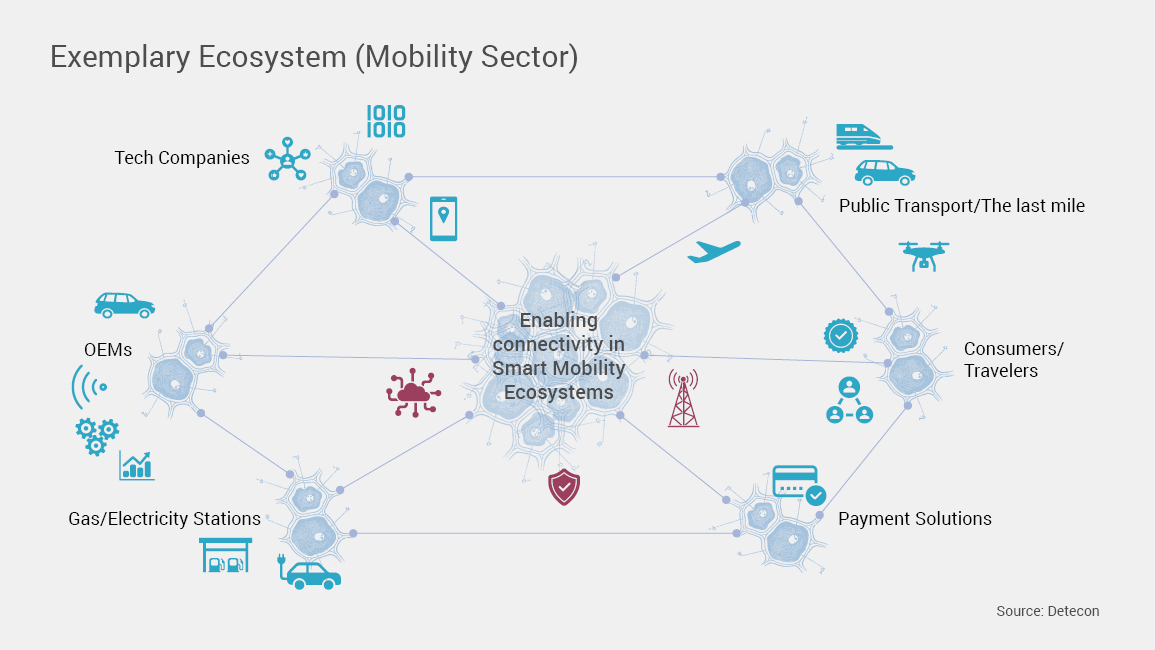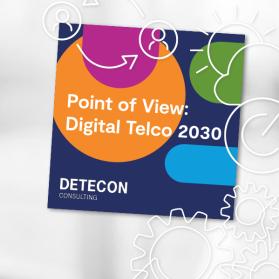The growing number of failures and successful strategies now becoming visible have prompted Detecon to launch its telecommunications ecosystem index research in 2021, a project for the analysis of more than 145 telco ecosystems. We will use the results to guide our partners into the next ecosystem design revolution. In the following discussion, we will present Detecon’s perspective along with some of the early findings from our research as well as take a look into the future and describe the form telco ecosystems will have in 2030.
A short note on the ecosystem hype and a look ahead at the future role of the chief ecosystem officer. Sparked by the success of the hyperscalers, the terms “ecosystem play” and “platform play” have become key buzzwords for strategists and consultants. Misused by some, misunderstood by others, and adopted by first movers to disrupt industries, ecosystem play has become firmly established. Telcos, who have operated as a networked industry throughout their history, have for many years sought ways to participate in the modern form of “over the top” ecosystem play.
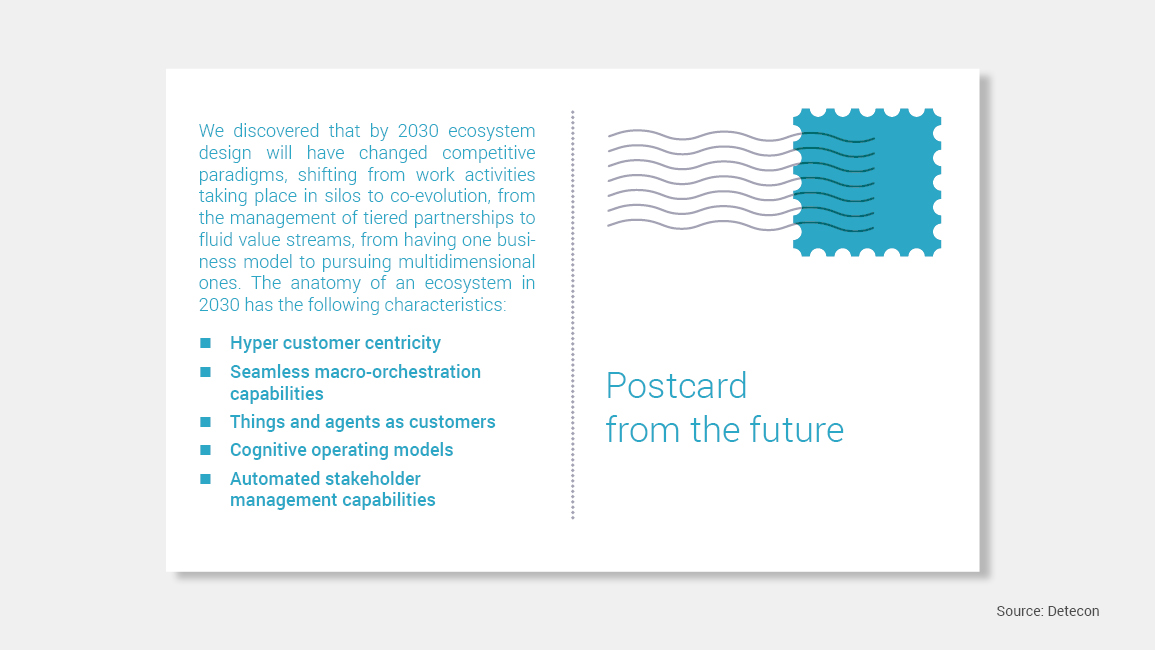
Wanting to find out what the future holds for us, we stepped into our time machine and traveled to the year 2030 for a discussion with Dan Wright, Chief Ecosystem Officer at Telecom X.
Dan, when did you assume the position of chief ecosystem officer and what was the first thing you realized in your new job?
I started back in 2021 when we carried out a benchmark study on six competitors to assess their ecosystem strategy at the time. The benchmarks that came out of our work revealed that most competitors in the telecommunication industry were already in the process of integrating multiple ecosystems in various verticals and working with highly complex partner networks. My first and most important realization was that Telecom X was lagging far behind and that we needed to adapt if we wanted to stay competitive, by riding the wave of disruption that was headed our way. Momentum was key.
Did you manage to catch the wave at the right point? And how?
We certainly did. First, by changing every possible paradigm; second, by mastering crowd co-creation and crowd co-evolution within several complex networks; and third, with our scaling strategy, once we got the basics right.
So what is the anatomy of your ecosystems at this exact moment on June 13, 2030?
We interact in a group of ecosystems (currently a total of 87); the company pursues what we call the “ecosystem of ecosystems strategy” that has constant business innovation at its core and that serves advanced customer segments from the digital society. Our current anatomy can be summarized succinctly like this:
- Telecom X co-creates with 87 ecosystems. Each ecosystem is given its own design elements that include basic topology, hierarchy of roles and participants, links and synapses, information/data exchange, virtual transactions and physical assets, and distribution.
- Each ecosystem has partners who are specialists in fundamental areas (on average, 80 partners per ecosystem).
- In most of our ecosystems, the stakeholder 2.0 approach considers other systems, organizations, value chains, cognitive systems, and machines as ecosystems users, too.
- Data drives everything. Just like nutrients and water in a biological ecosystem, data and information exchange are the basis for growth. FRAND (Fair, Reasonable and Non-Discriminatory) access to data has proven to be a key principle driving growth in many of our ecosystems.
- All our ecosystems are cross-industry. There are no clear provider/consumer roles anymore. Everyone consumes resources and services from the ecosystem, everyone contributes to it.
What are three key lessons learned from your ecosystem experience?
- Successful ecosystems will continue to grow in numbers, size, and complexity. Stakeholders, interrelationships, and data will not stop evolving. Mechanisms need to evolve simultaneously to keep pace with these developments.
- Ecosystems are dynamic macro- and micro-structures, and the ability to adapt will be crucial for long-term survival.
- Trust is the secret sauce for any ecosystem. It took many, many years to build trust and create mechanisms for sharing and conferring trust. In a few cases, regulation actually helped.
Ecosystems in the telecommunications industry today
Our latest research from the present clearly indicates that the future has already arrived: telcos have started embracing ecosystems! Leading global players already participate in 20 or more ecosystems. Telecoms have realized that without partners from other industries they cannot deliver the end-to-end value their customers require, and so they are reaching out to join and to integrate into other verticals. A typical ecosystem involves players from fi ve other verticals. And the ecosystems are “healthy,” populated by a broad variety of “species.” The median number of players is in most cases in double digits and exceeds the threshold of 50.
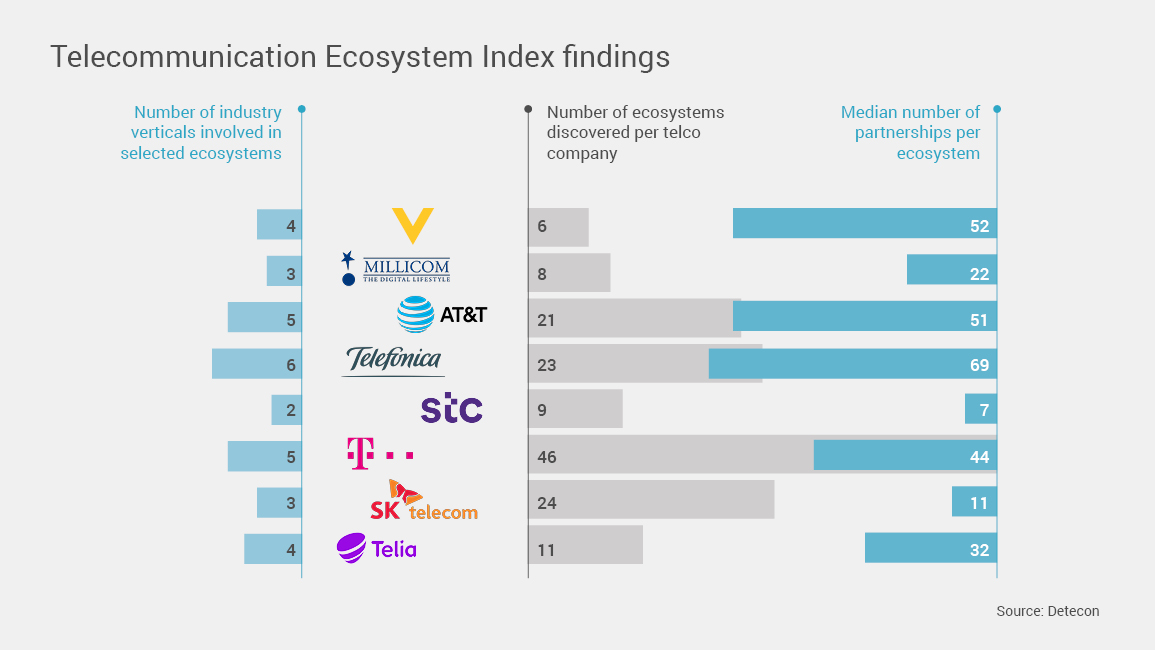
Ecosystems are cross-industry and link customers with infrastructure assets
Telcos’ biggest assets are their customer base and their infrastructure and they must be protected in any ecosystem play. This is also true for other industries, whether energy, retail trade, banking, transportation, or anything else. Ecosystems generate their value primarily at the services layer.
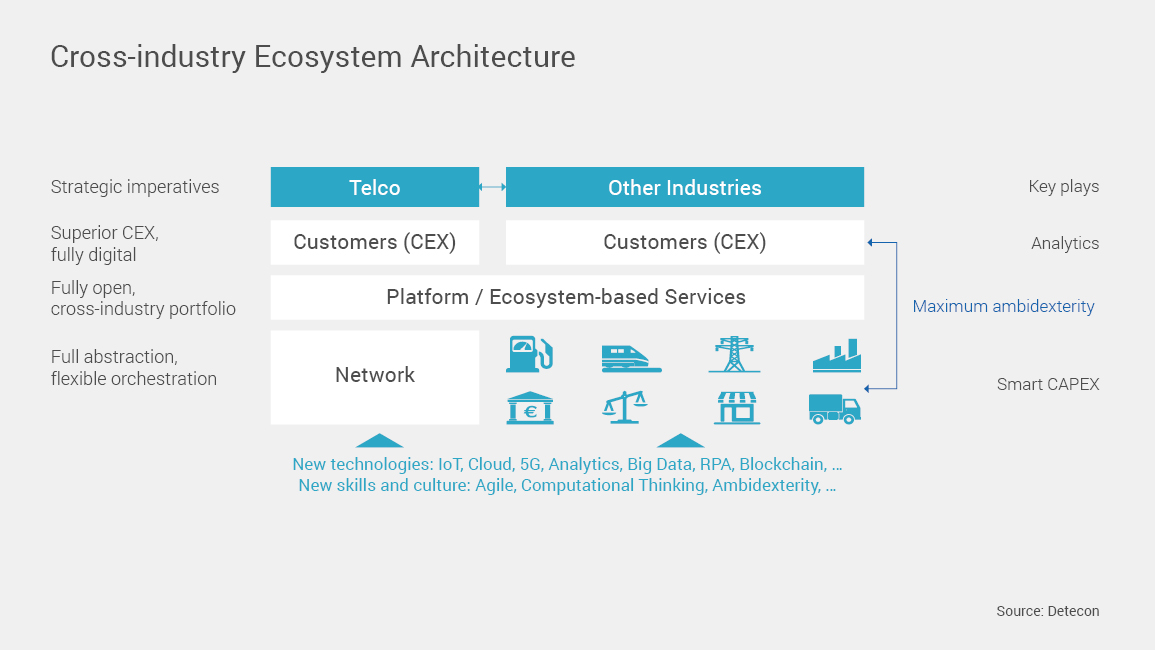
As the business logic for a customer-centric organization differs greatly from that of an infrastructure player, end-to-end business models require the greatest organizational stretch – from steering logic to culture and mindset. For telcos and incumbents from other industries, breaking up into separate entities that tap into the service ecosystem might become viable options as we approach 2030. “Over-the-top” players in any industry, whether telco, travel, or transport of fi nancial services, follow exactly this approach.
